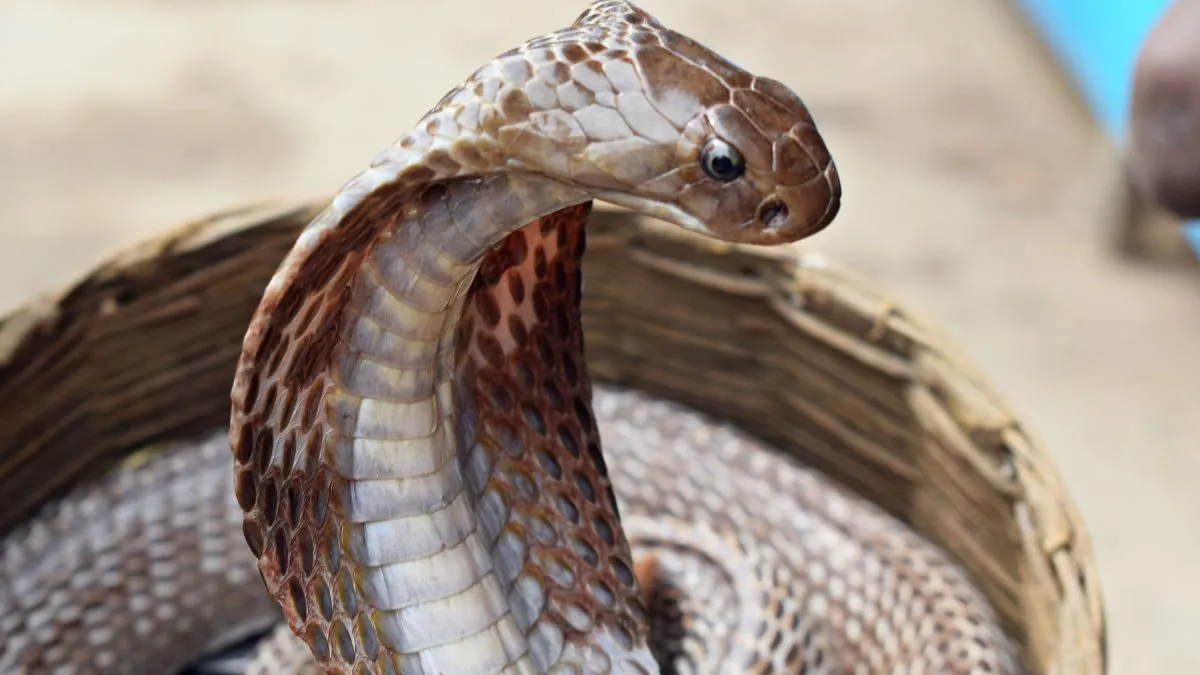- By Shivangi Sharma
- Tue, 10 Jun 2025 05:11 PM (IST)
- Source:JND
In a shocking and unprecedented discovery, ten highly venomous snakes, including nine king cobras and one monocled cobra, have been found in and around Kathmandu, just 160 kilometres from Mount Everest. This alarming phenomenon has left scientists deeply concerned, as these snakes are typically found in hot, humid environments like swamps, rice fields, and dense forests, not the cold, high-altitude regions of the Himalayas. Experts warn that this is not an isolated incident but a dire warning of climate change’s accelerating impact.
King cobras, the world’s longest venomous snakes, are native to the dense forests of India, Southeast Asia, and the Philippines. Monocled cobras, identified by the distinctive circular marking on their hoods, usually inhabit lowland wetlands. Their sudden appearance in Nepal’s mountainous terrain suggests a drastic ecological shift.
Officials from Dakshinkali Municipality confirmed that nine king cobras were rescued from residential areas in Gopaleshwor, Bhanjyang, Sokhol, and Fulchowk. Even more concerning, locals have reported discovering king cobra eggs and nests in nearby jungles, proof that these deadly snakes are not just straying into the region but potentially breeding there.
Climate Change: The Invisible Culprit
Scientists believe global warming is driving these tropical snakes into cooler elevations. Rising temperatures and shifting weather patterns may be making Nepal’s hills and mountains more hospitable to species that once thrived only in warmer climates.
Nepal is among the countries most vulnerable to climate change, having faced extreme weather events, glacial melts, and unpredictable monsoons in recent years. The migration of venomous snakes into higher altitudes is another grim indicator of how rapidly ecosystems are being disrupted.
Warning Of Bigger Disasters
This isn’t just about snakes, it’s a sign of deeper environmental chaos. If apex predators like king cobras are forced to relocate, smaller species may follow, leading to unpredictable ecological consequences. Additionally, increased human-snake encounters could pose serious risks to local communities that are unprepared for venomous snakebites. The presence of king cobras near Everest is a chilling reminder that climate change is no longer a distant threat, it’s reshaping our world in dangerous and unexpected ways.

